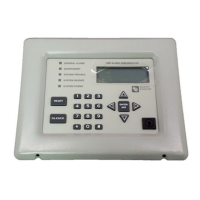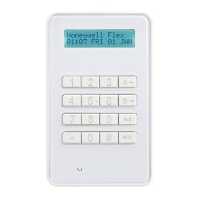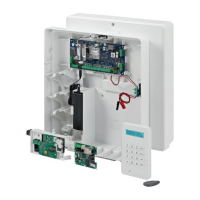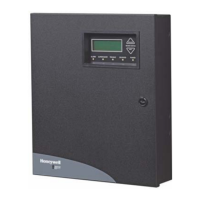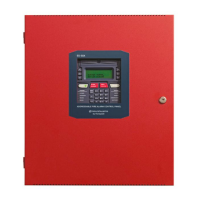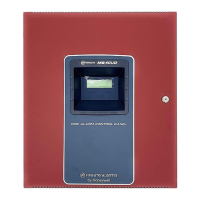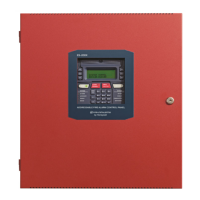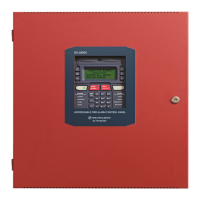IFP-300 Series Manual — P/N LS10145-001SK-E:C 4/6/2022 107
Point Programming
SWITCH MANUAL PULL Use this switch type for manual pull stations. This input is always latched. The switch can
clear only when an alarm is reset. This switch type has the highest fire priority; it overrides
any other type of fire alarm.
WATERFLOW Latching Use this switch type for monitoring water flow in a sprinkler system. Switch closure will
cause a sprinkler alarm. Water flow switches can be programmed as latching or non-
latching.
You can program a delay of up to 90 seconds to be used with a water flow switch. The
delay allows for normal, brief changes in sprinkler system water pressure. The water flow
alarm will not activate unless the switch is active for the programmed delay time.
If a delay is used, the system begins counting down when the switch closes. If the switch
opens (restores) before the timer expires, a water flow alarm is not generated. If the water
flow switch remains closed after the timer expires, a water flow alarm will be generated.
Non Latching
FIRE
SUPERVISORY
Latching Use this switch type for tamper monitoring of sprinklers and other fire protection devices. If
a contact closes, a sprinkler supervisory event will be generated. Supervisory switches can
be latching or non-latching.
Non Latching
FIRE DRILL System-level, non latching switch. This switch is an alternative way of causing a fire drill. It
has the same operation as the fire drill option available from the annunciator. When the
switch is activated, a fire drill begins; when the switch is de-activated, the fire drill ends.
SILENCE This system-level switch is an alternative way to silence the fire system. It has the same
effect as pressing the Silence key.
RESET This system-level switch is an alternative way to reset the fire system. It has the same effect
as pressing the Reset key.
P.A.S. ACK Positive acknowledge switch. This switch must be used in zones programmed as Positive
Alarm Sequence. ( See “Edit Zone Properties” on page 97.).
If an acknowledge switch closes when an alarm or trouble condition is not already in
progress, a trouble will occur.
You must use a UL listed normally open, momentary switch type. The switch must be rated
at 5V, 100 mA (minimum) and be used with an EOL resistor for supervision.
ZONE AUX1 Latching Use these switch types if you want to monitor special zone-level conditions (such as dry
contact from a remote power supply).
Non Latching
ZONE AUX2 Latching
Non Latching
SYSTEM AUX1 Latching Use these switch types if you want to monitor special system-wide conditions (such as dry
contact from a remote power supply).
Non Latching
SYSTEM AUX2 Latching
Non Latching
DETECTOR Used to monitor conventional 4-wire detectors, a contact closure will generate a detector
alarm event.
FIRE TAMPER Latching Performs identically to a supervisory switch, but will be indicated as a tamper switch on the
LCD annunciator.
Non Latching
MANUAL
RELEASE
Manual release switch
INTERLOCK Interlock release switch input.
STATUS POINT
Type
Selection
Function Latching Option Comments
Table 8.7 Programming Options for 6815 Modules (Continued)
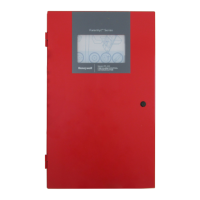
